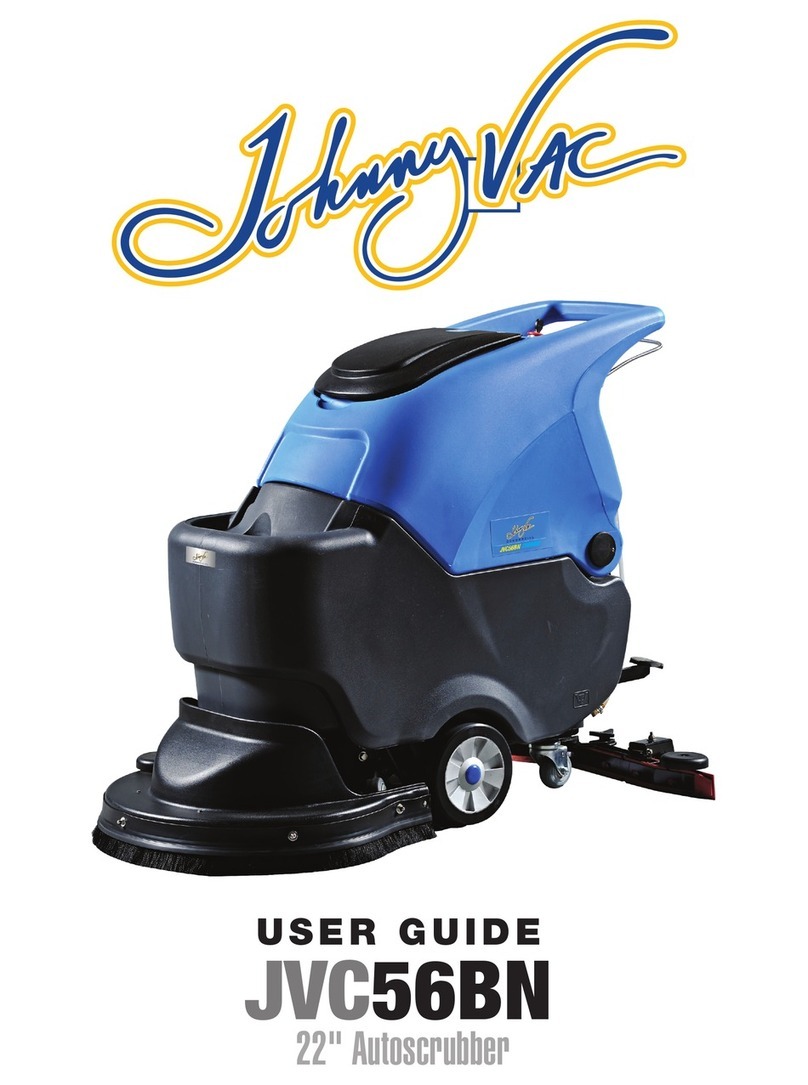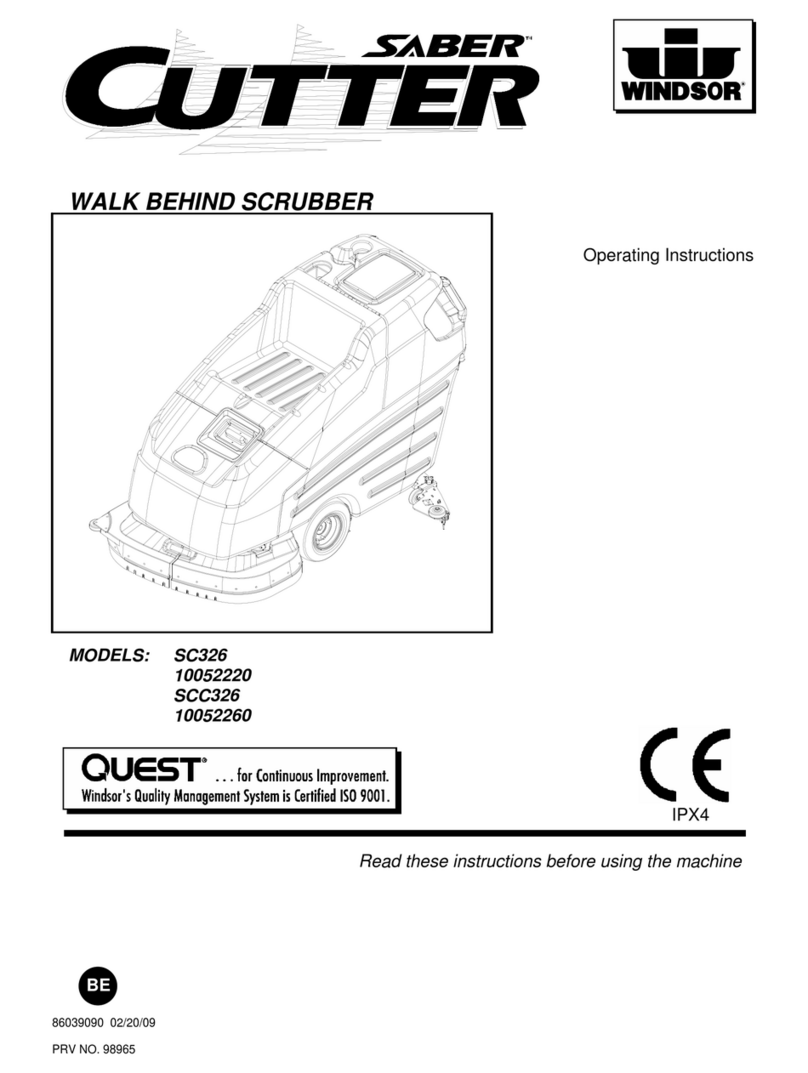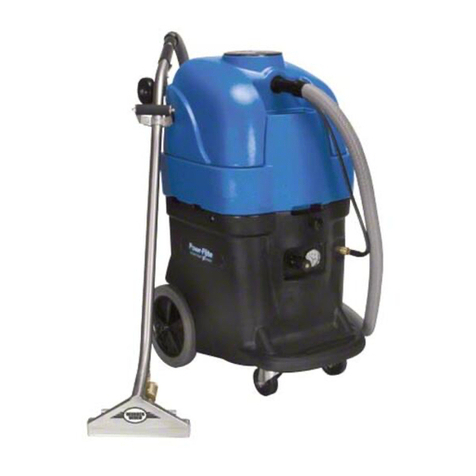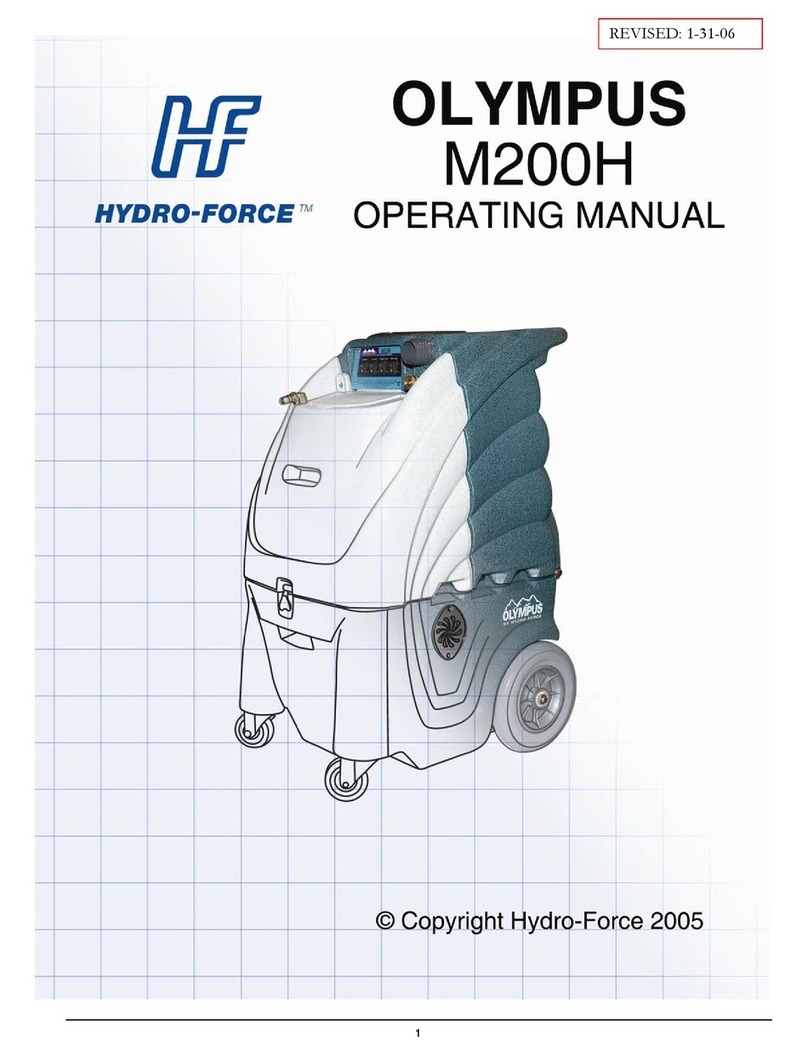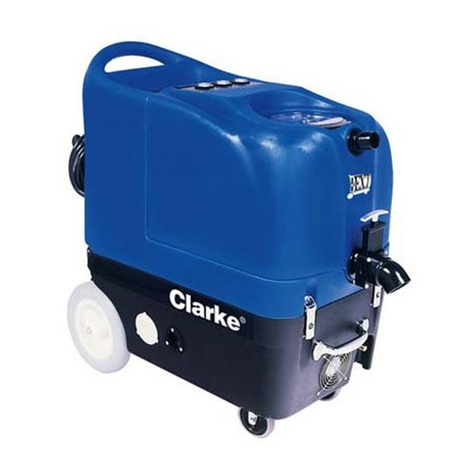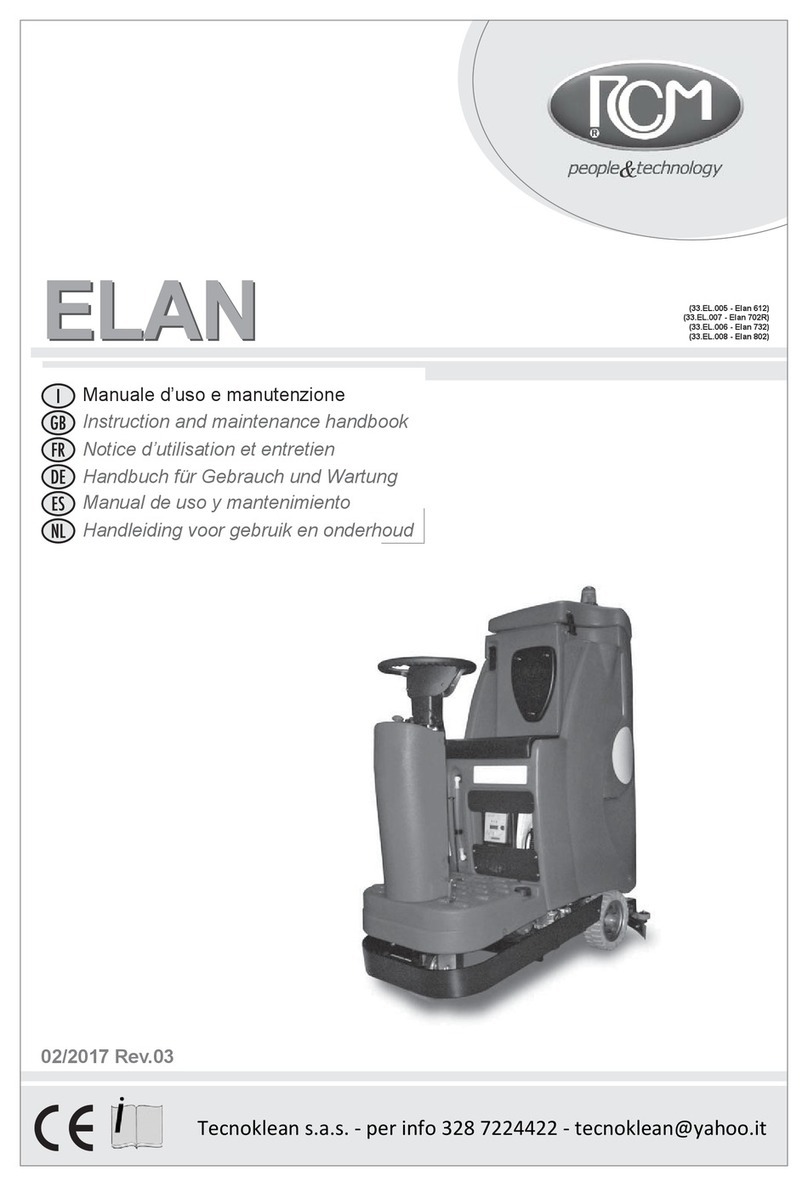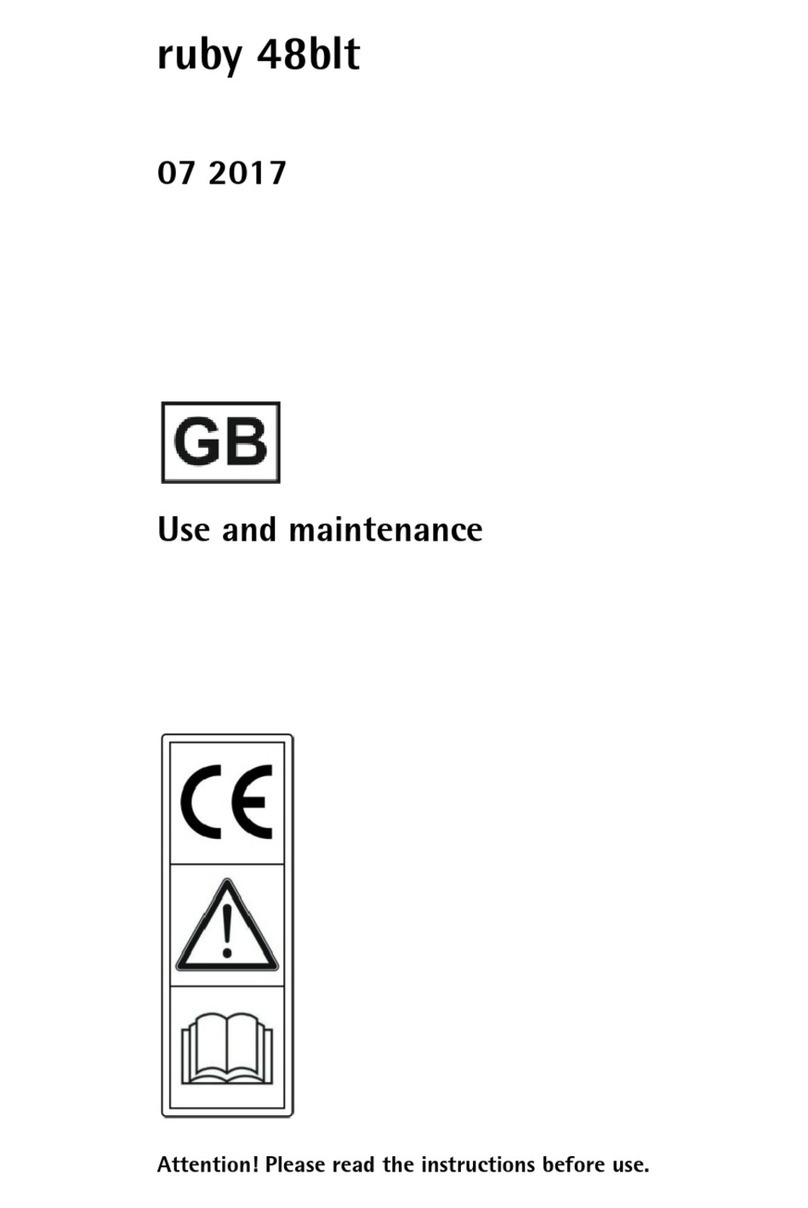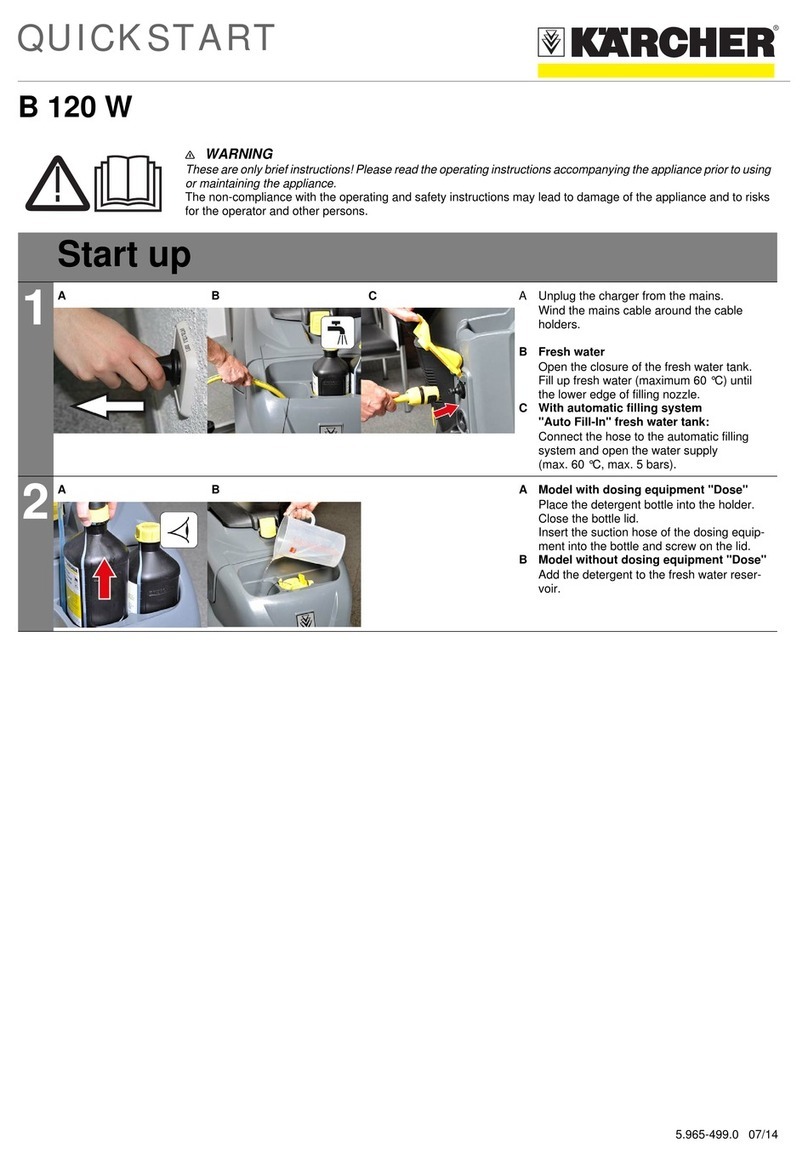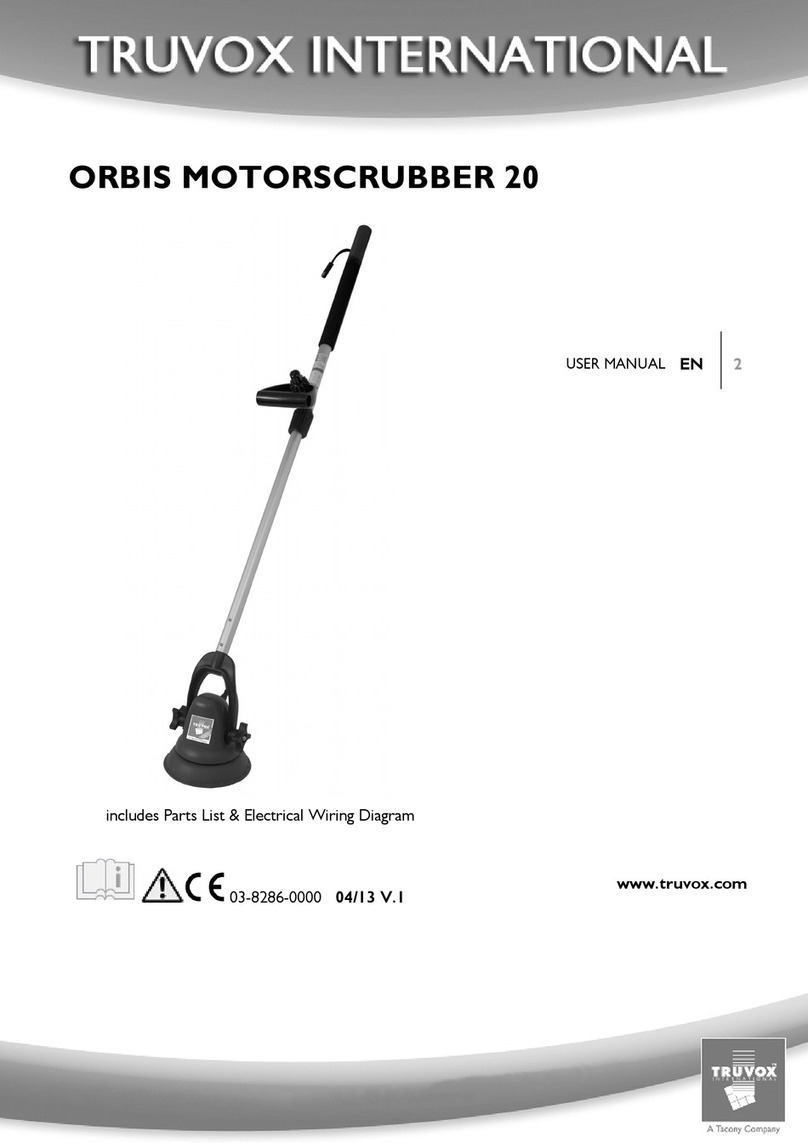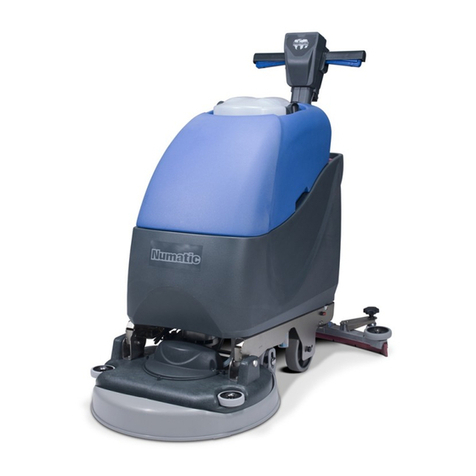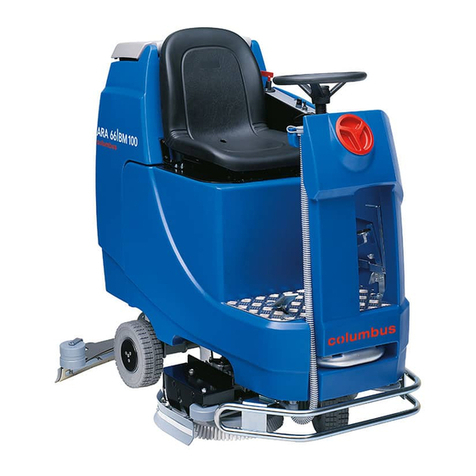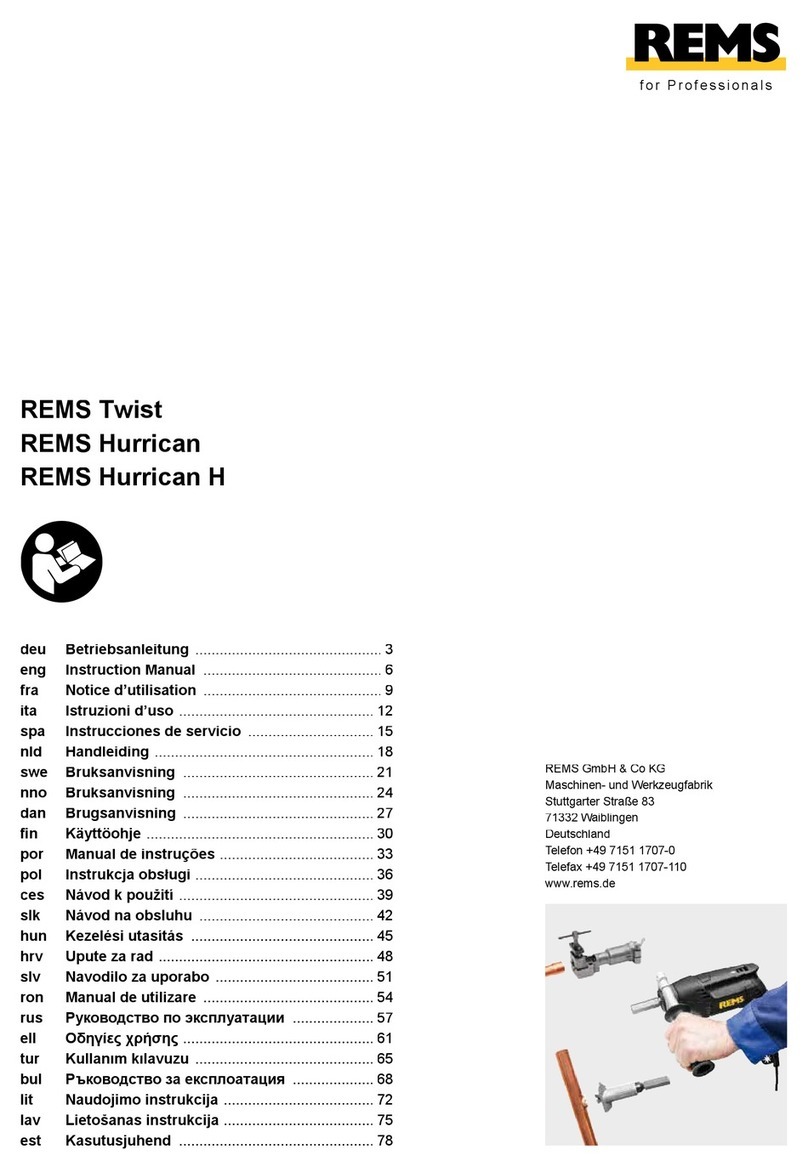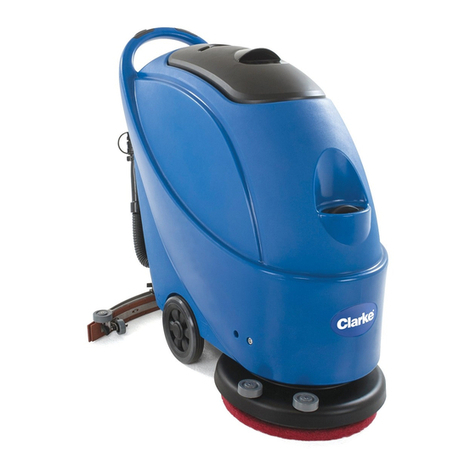•This machine must be exclusively operated by trained and authorized people.
•This machine must not be operated by minors.
•This machine must not be used for other purposes than those expressly designed.
•Scrupulously respect all safety standards and conditions when this machine is operated in some special
circumstance e.g. hospitals, chemicals, etc.
•Do not use this machine in some places where lightning is inadequate or explosive atmosphere or in presence of
dirt hazard to health environment.
•This machine is designed to work in a humidity of 30 % to 95 %.
•Never use to clean flammable liquids, explosive gases, dry ducts, acids and solvents.
•Never use this machine on slopes or ramps of more than 2 %.
•In the case of slight slopes, do not use the machine transversally or reverse it. When it is transported on steeper
ramps or slopes, ….
•Make sure to raise up the brush head and squeegee when moving the machine on ramps.
•Never park the machine on a slope.
•The machine must not be left unattended with motor or engine on. Before leaving it, turn off the motor or engine
and make sure it cannot move.
•Never obstruct ventilation or heat dispersion slits.
•Based on numerous unpleasant experiences, user should remove jewellery, watches and ties before operation to
prevent the cause of some serious accidents.
•Keep your hands away from moving part.
•Never use detergents other than the ones specified”
•Make sure the power socket used for this machine recharge is correct.
•Make sure the characteristics of the machine, such as working voltage, current, frequency, meet its rated ones.
•It is indispensable to respect the battery manufacturer’s instructions and current legislation. The batteries should
always be kept clean and dry to avoid surface leakage current. Keep the batteries away from metal dust. Never
leave any tools on batteries as this may cause short circuit and explosion. Hen using acid batteries, user should
comply with relevant safety instructions scrupulously.
•In the presence of particularly strong magnetic fields, the machine’s electronic control system may be affected.
•Never wash the machine with high-pressure water jets.
•The collection of sewage or detergent should be disposed off in accordance with current legislation.
•In case of malfunction and faulty operation, turn the machine off and report immediately.
•All maintenance operations must be performed in an adequate place. Make sure to shut off the machine before
proceeding. Only authorized personnel must perform maintenance or repair operations.
•Only original accessories and spare parts supplied by the manufacturer may be used in order to guarantee safety
on operation of the machine. Never use the parts removed from other machines.
•The machine must be disconnected from the power supply, emptied of liquids and cleaned completely.
•Special waste cannot be disposed of with ordinary waste.
•Alternatively, the machine must be returned to manufacturer for a complete overhaul.
•If you decide to stop using the machine, you are recommended to remove the batteries and dispose of them at an
authorized collection center.

